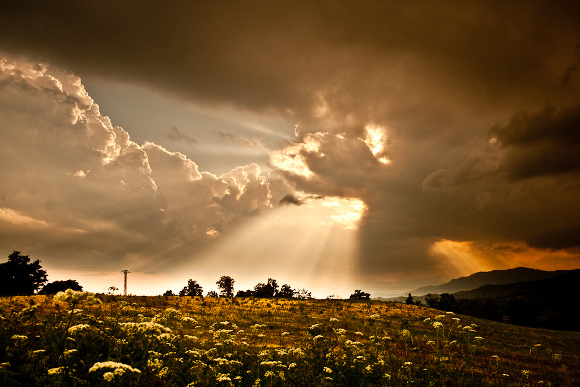The New Testament is divided into several sections. The first four books are the Gospels and contain the story of Jesus’ life, death, and resurrection. After the Gospels comes the Acts of the Apostles. This book contains a history of the first thirty years of the Church. Next comes various letters written to churches and individuals. Most of these were written by Paul, but there are others ascribed to Peter, James, John, and Jude. The last writing in the New Testament is The Revelation. This is a collection of apocalyptic writings written to seven churches in Asia Minor.
Each of these groups of writings contain stories, teaching about, and references to miracles. The Gospels, of course, contain the most miracle stories. The Gospels can be sub-divided into two groups: the Synoptic Gospels, which are Matthew, Mark, and Luke, and the Gospel of John, which is very different from the Synoptics. The word “synoptic,” means to, “see together.” Matthew, Mark, and Luke all have a very similar point-of-view. The main reason for this is that it appears that Mark was the source Gospel for Luke and Matthew.
The Gospel of Mark contains more miracles and supernatural experiences than the other Gospels. Mark contains twenty one accounts of miracles or supernatural experiences involving Jesus. Mark also writes, “So Jesus healed many people who were sick with various diseases, and he cast out many demons.” (Mark 1:34) Mark provides several of these summary statements throughout his book indicating that Jesus performed many more miracles than those twenty one described in detail.
The Greek word that Mark uses when he discusses Jesus’ miracles is “dunamis,” or one of its derivatives. This word is where the English word, “dynamite” comes from. A “dunamis” is an act of supernatural power. Jesus performed several different kinds of miracles. The most common was His healing of the sick. No sickness was too big or too small for Him to heal. In Mark 1:31, He healed a woman of a severe fever and in 5:41 He raised a little girl from the dead. In between those two extremes, Jesus healed the blind, deaf, and the lame. He also set many people free who were under the control of evil spirits. There are also a few nature miracles in which Jesus calms a storm, walks on water, and multiplies food to feed large crowds.
The Synoptic writers show Jesus performing His many miracles in conjunction with His preaching and teaching ministry. Jesus primary message was, “The Kingdom of God is near! Repent of your sins and believe the Good News!” (Mark 1:15) The miracles complemented the message and demonstrated in a tangible way that, indeed, the Kingdom of God was near.
John’s Gospel presents the miracles a little differently. John shows Jesus doing the same kinds of miracles that the Synoptic writers describe. In some cases, John even relates the same miracle, such as the Feeding of the Five Thousand. John, however, uses a different word when he is relating a miraculous story. Instead of using “dunamis,” John uses the Greek word, “semia” or one of it’s derivatives. Semia translates as, “sign.”
John only provides seven miracles in his Gospel, and each one is referred to as a “sign.” For John, the miracles carried a spiritual meaning and significance that went beyond the act itself. John understood that each sign or miracle, conveyed an aspect of Christ’s Divinity. The act itself was important for the recipient, but the spiritual significance of the sign was also very important to John.
The first sign that John gives is Jesus turning water into wine at a wedding. New Wine is an Old Testament concept that pointed to the Kingdom of God. The fact that the miracle occurred at a wedding points to the idea of the covenant that God had made with His people. The last sign that John presents is that of Jesus raising Lazarus from the dead. This amazing miracle points towards Jesus’ own resurrection that would soon take place. The difference, however, was that Lazarus would eventually die again. When God raised Jesus from the dead, Paul said that Jesus was, “the first of a great harvest of all who have died.” (1 Corinthians 15:20) Jesus was raised, never to die again, signifying His victory over death.
To be continued…
Would you consider joining our team as we serve in Brazil? Just click here to get involved. Thanks so much!


